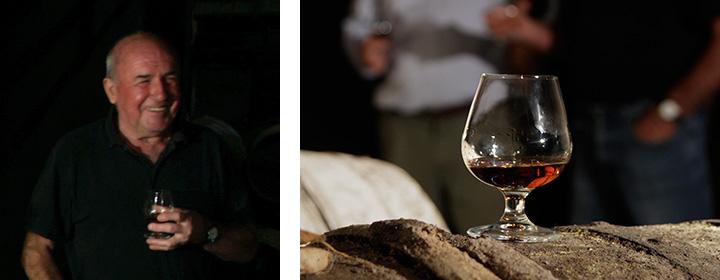Armagnac, a famous heritage
Armagnac is France’s oldest brandy: around the beginning of the11th century AD, distilling techniques that had originated in ancient Egypt came to Gascony via nearby Moorish Spain and its Al Andalus civilisation. Just as the Romans had been quick to plant Gascony with vineyards, stills began to develop rapidly. By the 15th century, brandy had become one of life’s pleasures, appreciated in its own right rather than solely for its therapeutic virtues (Joan of Arc – aka ‘L’Armagnacaise’ – gave it to wounded soldiers).
But age is not the only reason why Armagnac claims to be an integral part of our heritage. It is also because Armagnac is an infinitely aromatic treasure born of the earth, the fire of the stills, the ubiquitous water, the oaks growing on the nearby hills, and time, the final element that reveals and completes its perfection. Armagnac takes us back to our roots, to those calloused peasant hands from whence sprang so many riches; it has traversed the centuries, bringing with it a civilisation redolent of the good earth where it began, reawakening an ancestral part of our history that may hide under the surface but is definitely alive and kicking in us all.

And, just like all heritage, Armagnac is a source of that shared pleasure that binds us together! In Gascony, no festival is complete without Armagnac, from happy celebration of life’s rites of passage to noisy hunters’ gathering, it “loosens the tongue and sharpens the mind, rekindles the past and makes men happy,” according to Cardinal Vital Dufour in his treatise on medicine, written in 1310.
And what joy, too, comes from sipping it quietly during long evenings with friends or family, enjoying their company and conversation, and letting our dreams turn into meditation
FIND OUR ARMAGNAC ?
Some restaurants and retailers :
Carré des Feuillants (Alain Dutournier) – Paris
Les Caves Marly – Marly-le-Roy
Apicius (Jean-Pierre Vigato) – Paris
Maison Rostang – Paris
Hôtels Esprit de France – Paris – Aix
Magnin vin & spiritueux – Cully, Suisse
Caves Jacquèmes – Aix-en-Provence
Le Vin devant soi – Avignon

